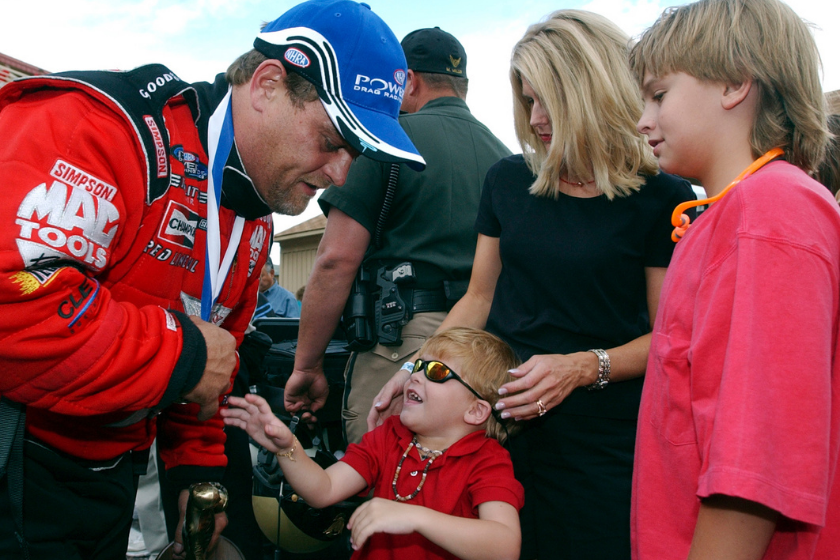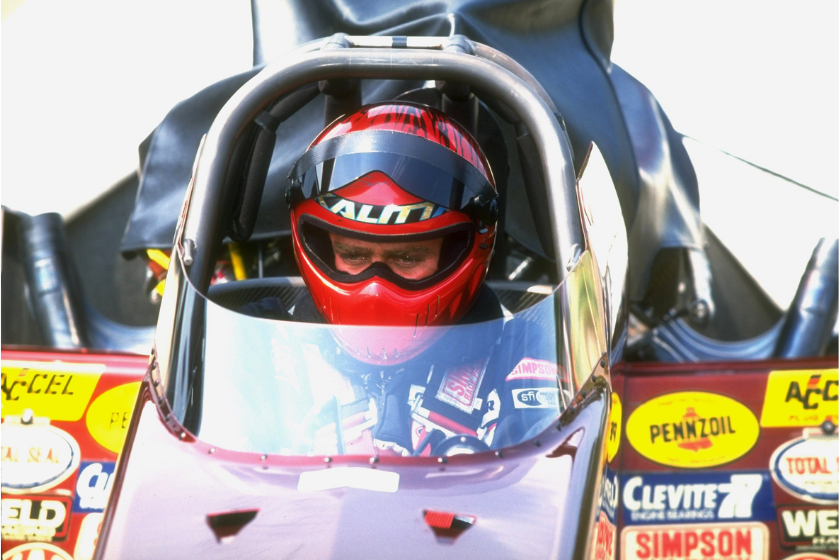Scott Kalitta was pretty much born to be a drag racer. The son of veteran racer and crew chief Connie Kalitta and cousin of his teammate Doug Kalitta, Scott saw the most success in the Top Fuel class of the NHRA, with 18 wins and two championships to his name.
Videos by FanBuzz
Sadly, Kalitta's career would come to a premature halt after he tragically lost his life in a crash during a qualifying event. He was 46. He left behind his wife Kathy and his two sons, Colin and Corey.
In the aftermath of Scott Kalitta's fatal accident, the NHRA made a number of changes to improve safety on the drag strip. Unfortunately, it took a 300 mph crash on June 21, 2008 to make those crucial changes possible.
Scott Kalitta's NHRA Career
Scott's drag racing career began at New Jersey's Old Bridge Township Raceway Park, which would also be the same track where he would pass away years later. In the 1990s, he moved from Funny Car competition into Top Fuel racing, which is where he really shined.
By 1994, the year of his first championship win, Kalitta also became the first driver to have four straight event wins. In 1995, he won six events and around 45 rounds of competition, before bringing home the championship for the second year in a row. Following those two years of dominance, he actually decided to retire in 1997 to devote more time to his family.
His retirement would be short-lived, as he decided to jump back into NHRA drag racing in 1999. He returned to Top Fuel in 2003 and set a new speed record of 333 MPH. In 2006, he switched to racing Funny Cars again, however, he did not have nearly as much success as he had in Top Fuel.
Toward the end of this year, he moved from his Monte Carlo race car to a Toyota Solara, which he drove for the rest of his career. By 2008, he made his 36th final round appearance at Chicago, just two weeks before his death.
Scott Kalitta's Tragic Death
In June 2008, Scott was back where his career first began at Old Bridge Township Raceway Park for the final round of qualifying for the Lucas Oil NHRA SuperNationals. Kalitta was going down the quarter-mile at right around 300 MPH when his engine exploded and his Funny Car burst into flames.
The car's parachutes were damaged due to the flames, so Kalitta applied as much mechanical braking as he possibly could to slow the nitro race car down throughout the shutdown area of the track. The carnage from the explosion actually locked the clutch system, which meant that the car was still continually powering down the track as the Funny Car driver tried to slow it down.
Kalitta's car went through the run-off sand trap at the end of the track at around 125 mph, where it then crashed and went over the retaining wall before slamming into a heavy piece of track equipment. The car was completely destroyed in the accident, and Kalitta was rushed to a hospital.
Unfortunately, Kalitta did not make it through the catastrophe. The next day, in what would have been his opening elimination round event, the entire Kalitta team stood on the starting line as his would-be competitor, Robert Hight, idled his car down the race track out of respect.
Following an investigation of the crash, the NHRA decided to shorten the Top Fuel and Funny Car races to 1,000 feet and added safety measures, such as extra padded retaining walls. Although unpopular for some of the fans, this length is still being used in today's races.
By implementing the changes, officials also sought to eliminate engine backfire due to Kalitta's crash. With the help of Funny Car champion John Force, Kenny Bernstein, and Top Fuel champion Tony Schumacher, the NHRA developed and implemented a sensor that would automatically deploy parachutes in the event of a backfire.
Scott's death was extremely tragic, but he sure was one hell of a driver. He gave it everything he had on every pass and his accomplishments proved that. His death was certainly a hard day for the drag racing community, but with it came precautionary safety implementation to help make sure this would never happen again.
The sport of drag racing is extremely dangerous regardless, but these racers take on that challenge each and every day to become the next champion.
This post was originally published on January 28, 2021.


